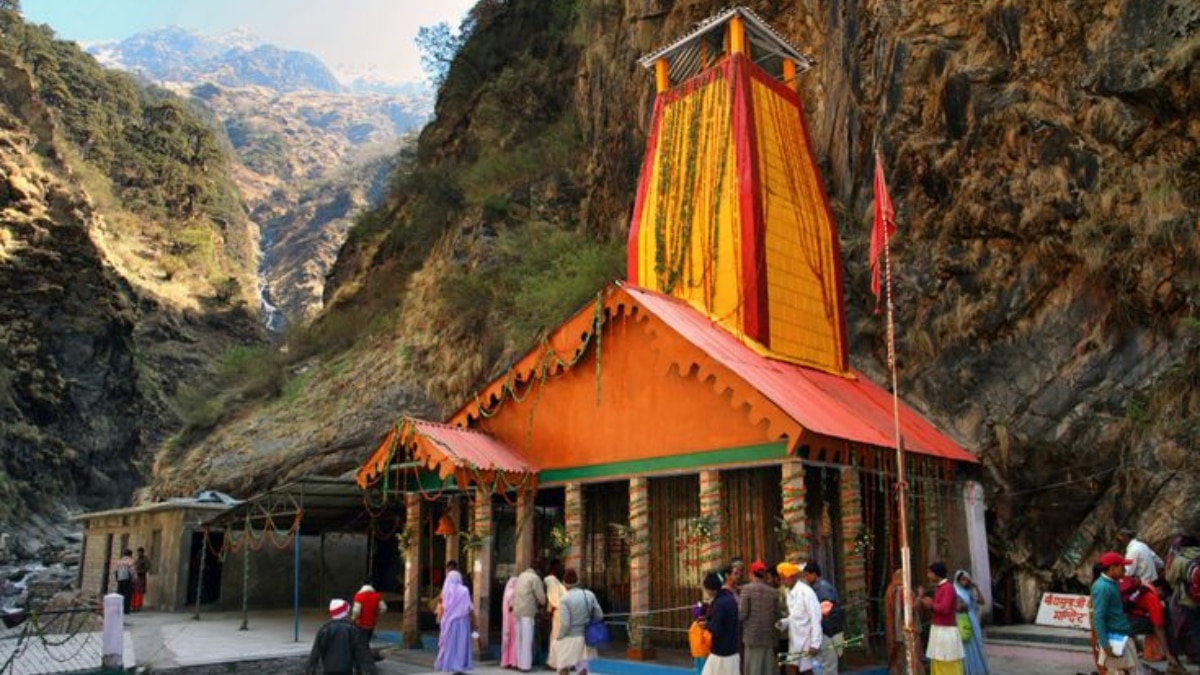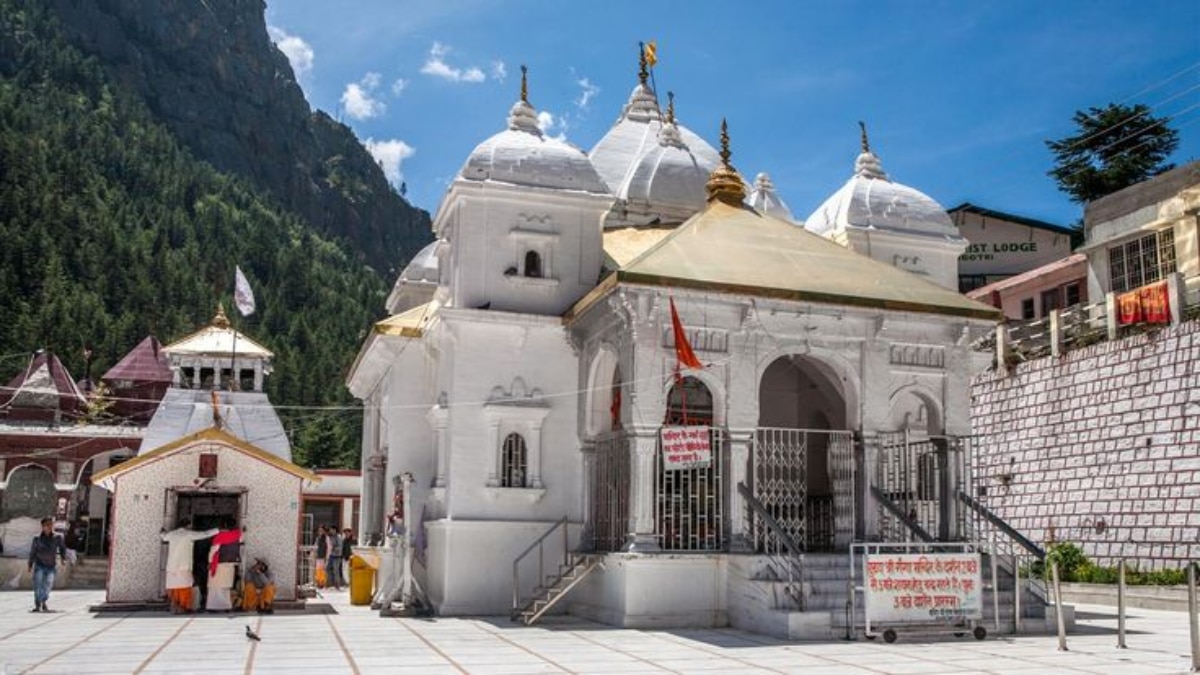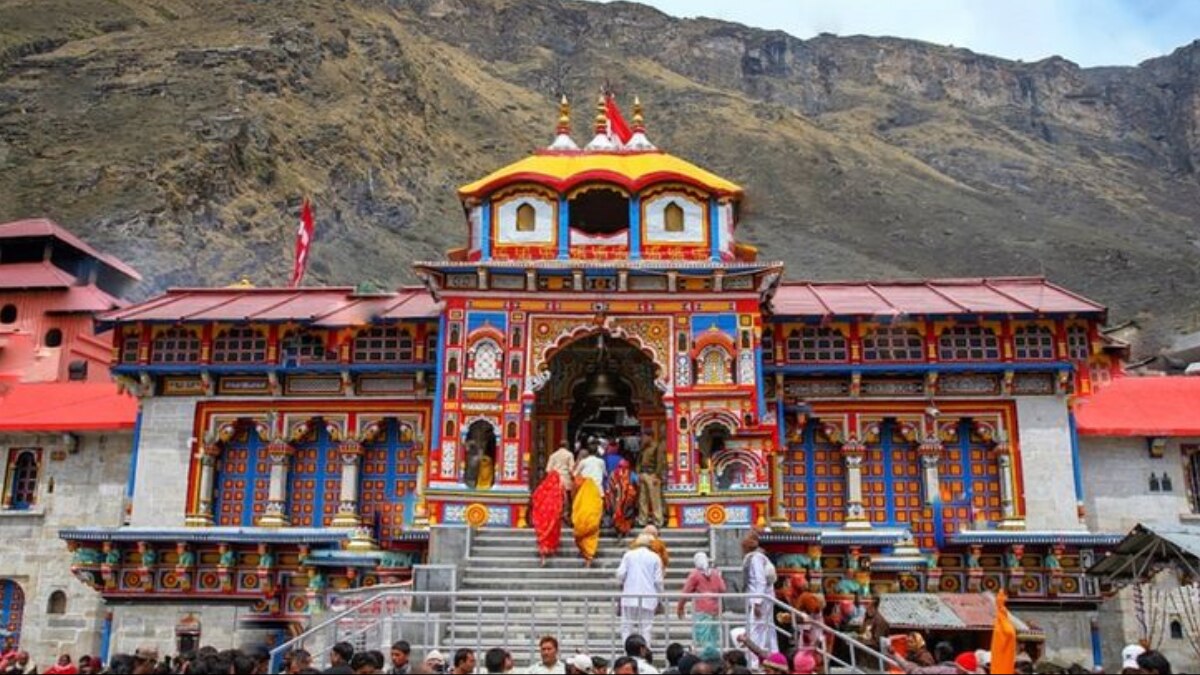Know The Rituals And Traditions Followed In The Char Dhams
Char Dham Yatra is one of India’s most sacred pilgrimage destinations and attracts millions of devotees each year. The Char Dham – Yamunotri, Gangotri, Kedarnath, and Badrinath, nestled in the Himalayas, have immense spiritual meaning to the Hindus. Each shrine is connected to a specific ritual in search of divine blessings and spiritual purification. Not only does the Char Dham Yatra provide a spiritual satisfaction, but is also a great opportunity for physical and mental rejuvenation. It includes rituals like bathing in the holy rivers, offering prayers, performing pujas, and seeking ancestral blessings. This sacred Char Dham Yatra connects the devotees to the divine.
ALSO READ: Why Does The Char Dham Yatra Begin On Akshaya Tritiya? Discover Its Spiritual Significance
1. Yamunotri
 (Image Source: Pinterest/tourismofindia)
(Image Source: Pinterest/tourismofindia)
Yamunotri is the first destination of the Char Dham Yatra and Janki Chatti serves as the base camp of the trek. It is dedicated to Goddess Yamuna and is deeply worshipped by her devotees. Nestled in the Himalayan ranges, this sacred place is home to Surya Kund, a natural hot water spring that’s located near the main temple. Pilgrims often collect the hot water in containers here as it’s believed to have cleansing and healing properties. This holy water is also used to prepare a sacred offering of rice and potatoes that’s immersed and cooked in the thermal spring by wrapping it in a muslin cloth. This prasad is then shared among all the devotees as a symbol of Goddess Yamuna’s grace.
Yamunotri also holds significance for the devotees of Surya, the Sun God. According to Hindu mythology, he is known as the father of Goddess Yamuna. He is honoured by the Surya Namaskar ritual that is performed by many pilgrims. The temple’s day begins with the Mangala Aarti that’s held before sunrise, and is accompanied by ringing of bells and prayers. In the evening, the temple glows with lamps and Ganga Aarti is performed on the riverbank. One of the main rituals here is the abhishek of Goddess Yamuna’s idol. It’s performed with sacred objects like milk and holy water, and the priest signs mantras.
The gates of Yamunotri temple open annually on the auspicious occasion of Akshaya Tritiya.
2. Gangotri
 (Image Source: Pinterest/pilgrimagetourpackages)
(Image Source: Pinterest/pilgrimagetourpackages)
Gangotri, the second destination of the Char Dham Yatra, is dedicated to Goddess Ganga. This sacred temple is located in Uttarkashi and attracts countless devotees who come in search of spiritual purification and pay homage to the goddess. It is believed that Ganga descended from the heavens to purify the Earth. Gangotri marks the spot where the celestial river first touched the ground. The Gangotri rituals revolve around deep reverence for the river.
Devotees begin their day by bathing in Bhagirathi River, believing that it will wash away their sins and impurities. They then go to the temple for darshan and offer their prayers. Many perform a sacred ritual that’s dedicated to honouring and appeasing ancestors. Daily temple rituals begin with a Morning Aarti that’s followed by Abhishek ceremony, where the deity is bathed with sacred things. Other important practices are the evening Maha Aarti, Rudrabhishek, and recitations from Bhagvad Gita. Each of these acts are carried out with dedication and devotion, creating a spiritual atmosphere that improves the connection between the pilgrim and the divine.
The gates of Gangotri also open annually on Akshaya Tritiya.
3. Kedarnath
 (Image Source: Pinterest/tourmyholiday)
(Image Source: Pinterest/tourmyholiday)
At an altitude of 3.583 meters, Kedarnath Temple in the Garhwal Himalayas is a sacred shrine that’s dedicated to Lord Shiva. Surrounded by snowy peals and landscapes, this holy place attracts thousands of devotees who reach the temple after a challenging trek as an expression of devotion and spirituality. At the heart of the temple, lies a lingam that symbolises Lord Shiva’s presence.
Once the devotees arrive, they engage in various different rituals to seek the God’s blessings. The day at the temple vegins with Maha Abhishek, where the lingam is bathed in water, milk, and ghee. It is then followed by Morning Aarti and Rudrabhishek and concludes with Shayan Aarti at night. Chanting the ‘Bhairav Ashtakshari’ mantra is considered an important ritual of Kedarnath Temple. This mantra is dedicated to Lord Bhairavnath who is considered as the protectice deity of Kedarnath. Offering prayers to him is believed to provide safety and spiritual strength. Visiting Kedarnath is more than just a pilgrimage, it’s a journey of faith, endurance, and divine connection.
The temple gates of Kedarnath Temple are set to open on May 2nd, marking the beginning of the annual pilgrimage season.
4. Badrinath
 (Image Source: Pinterest/NIT_Manish)
(Image Source: Pinterest/NIT_Manish)
The last and most spiritually significant stop of the Char Dham Yatra is Badrinath. It’s a sacred shrine that’s dedicated to Lord Vishnu. This holy shrine is located in the Chamoli district of Uttarakhand and is one of the 108 Divya Desams, holy abodes of Lord Vishnu. Devotees gather here from all across the country for salvation and grace.
Pilgrims usually take a purifying dip in the Tapt Kund which is a naturally heated spring that;s beleievd to cleanse the body and soul. The temple rituals are deeply rooted in ancient traditions and egin early in the morning. The devotees engage in rituals like Abhishek, Alankara, and Bhog offering. The priests of the temple follow a worship schedule that’s known as Nitya Niyam, which ensures that all the rituals are carried out with precision and devotion. While Badrinath honors Lord Vishnu, the temple atmosphere resonates with sacred hymns and the spiritual rhythm of devotion, leaving a lasting impression on every pilgrim’s heart.
The sacred gates of Badrinath Temple will open for devotees on May 4th, marking the beginning of the pilgrimage season to this revered shrine.
[Disclaimer: The content of this article is based solely on beliefs, and should be taken as general guidance. Individual experiences may vary. ABPLive.com does not assert the accuracy or validity of any claims or information presented. It is strongly recommended to consult a qualified expert before considering or implementing any information or belief discussed herein.]
lifestyle